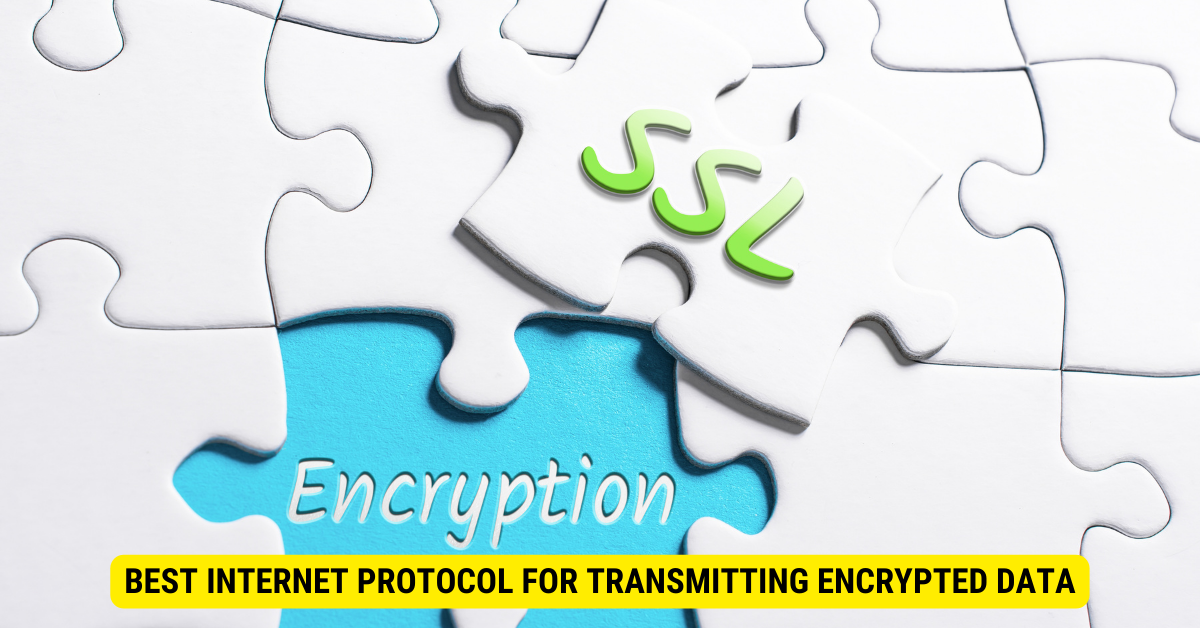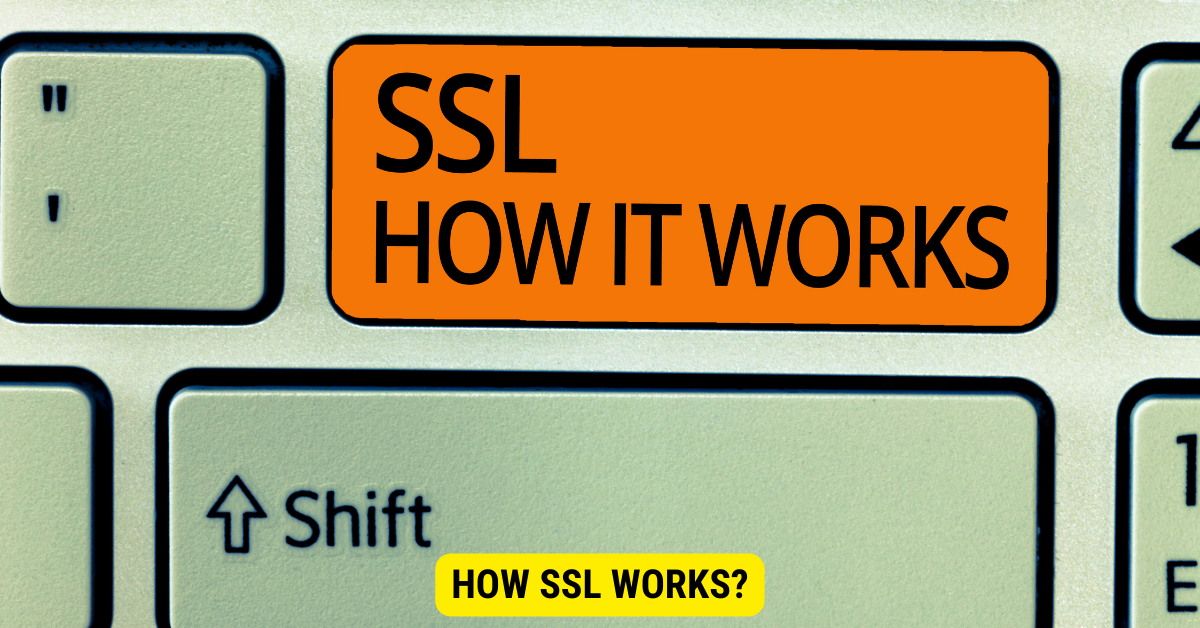As our digital footprint continues to grow, so does the importance of data security. This is especially true when it comes to transmitting data across the internet. Encryption, in particular, plays a crucial role in protecting data during transmission. The Internet Protocol Used to Transmit Encrypted Data is Secure Sockets Layer (SSL) and Transport Layer Security (TLS). These protocols are primarily used to transmit encrypted data over the internet. I will explore the protocols responsible for these encryption processes. Let’s delve into the fascinating world of data encryption and the internet protocols that facilitate it!
Understanding Data Encryption Over the Network
Data encryption on the internet isn’t as cryptic as it may seem. This process often involves the use of protocols like SSL or TLS. Here’s a brief rundown of how it works:
- Initiating Connection: A client (like your web browser) establishes a connection with a server and sends a number of random bytes. This is like a secret handshake that initiates the communication process.
- Server Response: The server responds with its own set of random bytes and an SSL certificate. This certificate validates the server’s identity, ensuring it’s the legitimate host of the domain.
- Key Exchange: The server also sends over its public key. This key is used to encrypt data, not decrypt it. The client then generates a secret key, encrypts it with the server’s public key, and sends it back to the server.
- Decryption & Communication: Using its private key, the server decrypts the secret key sent by the client. Now, both the client and server can encrypt and decrypt messages using this secret key. As a result, third-party observers can’t interpret their communication, despite having the public key and the random bytes exchanged initially.
Best Internet Protocol For Transmitting Encrypted Data

SSL, or Secure Sockets Layer, is best internet protocol used to protect information as it travels over the internet. When a website’s URL starts with “HTTPS” instead of “HTTP”, it indicates the use of SSL for encryption.
What is SSL and How Does It Work?
Secure Sockets Layer, commonly known as SSL, is a standard security protocol for establishing encrypted connections between a web server and a browser during online communication. The underlying purpose of SSL is to protect the transmission of sensitive information, such as credit card details, social security numbers, and login credentials, from malicious entities.
When a web server and a web browser communicate, SSL ensures that the data exchanged between them remain private and integral. To achieve this, SSL uses a combination of symmetric and asymmetric cryptography.
How SSL Works?

The SSL process involves two key elements: the ‘SSL Certificate’ and the ‘SSL Handshake. Here’s a simplified step-by-step process of how SSL works:
- SSL Certificate: This is a digital document that verifies the credentials of a server or client. An SSL certificate contains the certificate holder’s name, a serial number, expiration dates, a copy of the certificate holder’s public key (used for encrypting messages and digital signatures), and the digital signature of the certificate-issuing authority.
- SSL Handshake: When a browser attempts to access a web server secured by SSL, the browser requests the web server to identify itself. This begins the SSL handshake process. The server sends the browser its SSL certificate along with its public key. The browser checks the certificate against a list of trusted Certificate Authorities and ensures that the certificate is unexpired, unrevoked, and that its common name is valid for the server that it is connecting to. If the browser trusts the certificate, it creates a symmetric session key using the server’s public key, and then encrypts it with the server’s public key and sends it back to the server. The server then decrypts the symmetric session key using its private key and sends back an acknowledgement encrypted with the session key to start the encrypted session. The server and browser now encrypt all transmitted data with the session key.
This process makes sure that only the server can read the information sent by the client and vice versa. It creates a secure and encrypted connection, ensuring that the data transmitted between the browser and the server remains private.
Role of SSL in Internet Protocols

SSL plays a critical role in various internet protocols that are used to transmit encrypted data. Protocols like HTTPS (Hypertext Transfer Protocol Secure), FTPS (File Transfer Protocol Secure), and secure SMTP (Simple Mail Transfer Protocol) use SSL/TLS to encrypt the data transmitted between clients and servers. These protocols leverage the power of SSL to offer secure communication over the internet, ensuring the confidentiality and integrity of the sensitive information in transit.
By adopting SSL, businesses can provide their users with the assurance that their personal and financial data is secure, promoting trust and fostering positive relationships. With the rise in cyber threats, the role of SSL and the security it provides has become an indispensable part of the digital world.
Summarizing Key Points:
- Encryption is critical for securing data during internet transmission.
- SSL and TLS are protocols commonly used for data encryption.
- The process of encryption involves a client-server interaction, key exchanges, and the generation of a session key.
- SSL not only encrypts data but also helps verify the authenticity of websites.
- Various network protocols, each with specific roles, contribute to efficient and secure online communication.
FAQs
What is the role of SSL in data encryption?
SSL, or Secure Sockets Layer, encrypts data during transmission and also verifies the authenticity of websites to protect against phishing scams.
How is a secret key exchanged between a client and server?
The client generates a secret key, encrypts it using the server’s public key, and sends it to the server. The server then decrypts it using its private key.
Why are multiple protocols used in network communication?
Different protocols serve specific roles in network communication. Together, they enable structured, reliable, and secure data exchange over the internet.
What does it mean when a URL starts with “HTTPS”?
The “S” in “HTTPS” stands for “secure”. It indicates that the website is using SSL to encrypt data during transmission.
How does SSL protect against phishing scams?
SSL requires websites to provide a certificate to verify their identity. This helps users distinguish between legitimate websites and fraudulent ones.
Conclusion
Buckle up, folks! As we navigate the digital highway, encryption protocols like SSL and TLS serve as our seatbelts, ensuring our data arrives safely at its destination. In today’s interconnected world, where our digital footprint continues to expand, data security has become paramount. As we transmit sensitive information over the internet, it is crucial to adopt encryption protocols like SSL (Secure Sockets Layer) and TLS (Transport Layer Security) to safeguard our data. These protocols establish secure connections, encrypting data during transmission and verifying the authenticity of websites.
To protect your online activities, always look for websites with “HTTPS” in the URL, indicating the use of SSL encryption. Additionally, be vigilant when sharing personal information online and avoid interacting with suspicious or untrustworthy websites.
Remember, encryption is your ally in the fight against cyber threats. By prioritizing data security and implementing robust encryption protocols, you can confidently navigate the digital realm, keeping your information safe and preserving your privacy. Stay secure and keep surfing!
